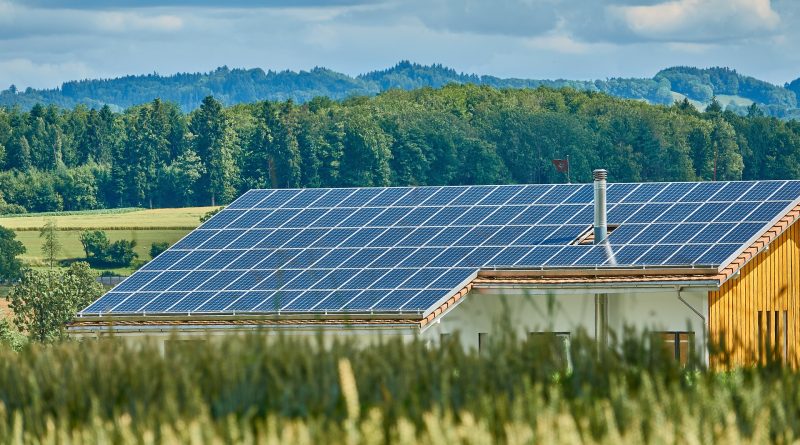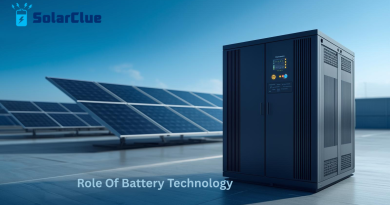Demystifying the Operation of On-Grid Solar Systems
Solar energy has gained widespread popularity in recent years as a sustainable and renewable source of power. Many homeowners and businesses have opted for solar panels to harness the power of the sun and reduce their dependence on traditional electricity sources. One of the most common types of solar systems is an on-grid solar system, also known as a grid-tied or grid-connected system. This blog will delve into the inner workings of an on-grid solar system and shed light on how it functions.
Table of Contents
The Components of an On-Grid Solar System
An on-grid solar system primarily consists of solar panels, an inverter, a net meter, and the utility grid. Let’s take a closer look at each component and understand their roles in the system:
1. Solar Panels
Solar panels, also called photovoltaic (PV) modules, are the heart of the on-grid solar system. They are composed of several solar cells that convert sunlight into direct current (DC) electricity through the photovoltaic effect. These panels are typically made up of silicon-based materials, which are known for their efficiency in converting sunlight into electricity. The number of solar panels required depends on the energy needs of the property.
2. Inverter
The DC electricity generated by the solar panels cannot be directly used to power household or commercial appliances, as most electrical devices operate on alternating current (AC). This is where the inverter comes into play. The inverter is responsible for converting the DC electricity produced by the solar panels into usable AC electricity. It ensures that the generated power matches the voltage and frequency of the utility grid.
3. Net Meter
The net meter is a device that helps monitor the flow of electricity between the on-grid solar system and the utility grid. It measures the power produced by the solar panels and the power consumed by the property simultaneously. If the on-grid system generates excess electricity, it is sent back to the grid, allowing other users to benefit from the surplus power. On the other hand, when the property consumes more power than the solar panels can generate, it draws electricity from the grid.
4. Utility Grid
The utility grid refers to the conventional electrical grid that supplies electricity to homes and businesses. When an on-grid solar system is installed, it remains connected to the utility grid. This connection provides a reliable backup source of electricity when the solar panels are unable to generate enough power, such as during nighttime or cloudy days. It also enables the system to export excess power back to the grid.
How Does It All Work Together?
Now that we understand the components, let’s explore how they work together in an on-grid solar system:
1. Sunlight hits the solar panels, and the solar cells within the panels convert the sunlight into DC electricity.
2. The DC electricity flows into the inverter, where it undergoes the process of conversion from DC to AC electricity.
3. Once the electricity is converted into AC, it is sent to the property’s electrical panel, where it can be used to power appliances, lighting, and other electrical loads.
4. Simultaneously, the net meter measures the amount of electricity being produced by the solar panels and the amount being consumed by the property.
5. If the solar panels generate more electricity than the property requires, the excess power is sent back to the utility grid through the net meter. This excess electricity is typically credited to the property owner, either through a reduction in their electricity bill or a feed-in-tariff program.
6. When the property’s electricity demand exceeds the solar panel’s production capacity, such as during nighttime or high energy consumption periods, the deficit is seamlessly supplied by drawing electricity from the utility grid. This ensures a constant and uninterrupted power supply.
This process of generating solar power and utilizing the utility grid when needed allows for a balance between self-consumption and grid dependency.
The Benefits of an On-Grid Solar System
Opting for an on-grid solar system offers several advantages:
1. Cost Savings: By generating your own electricity, you can significantly reduce your reliance on the utility grid, resulting in lower electricity bills. Additionally, the excess electricity generated by your solar panels can be shared with the community, further reducing your expenses.
2. Environmental Impact: Solar energy is a clean and renewable energy source that produces no greenhouse gas emissions. By using solar power, you are actively contributing to reducing carbon footprints and combating climate change.
3. Grid Reliability: Having a connection to the utility grid provides a secure backup source of electricity, ensuring uninterrupted power supply even when solar production is insufficient.
Conclusion
Unlock the potential of solar energy with an on-grid solar system from SolarClue®. This system efficiently harnesses sunlight through solar panels, converts it into usable electricity using advanced inverters, and seamlessly switches between solar power and the utility grid as needed. Experience significant cost savings, environmental benefits, and enhanced reliability by embracing on-grid solar systems. Join the movement towards sustainable energy solutions with SolarClue® – where positive impacts are made on both your energy bills and the planet. Connect with us to explore the possibilities of a greener and more efficient energy future.
Frequently Asked Questions
On-grid solar systems operate by converting sunlight into electricity using solar panels and feeding that electricity into the existing electrical grid.
Solar panels use the photovoltaic effect to convert sunlight into direct current (DC) electricity.
Inverters convert DC electricity produced by solar panels into alternating current (AC), which is compatible with the electrical grid and suitable for use in homes and businesses.
No, on-grid systems are designed to shut down during power outages to prevent sending electricity into the grid, ensuring the safety of utility workers.
Excess electricity generated by on-grid systems is fed back into the grid, and users may receive credits or compensation for this surplus electricity through net metering.
The excess power is exported to the grid, and users may receive compensation or credits, depending on local net metering policies.
Generally, on-grid systems do not require batteries, as the electrical grid acts as a virtual storage system, allowing users to draw power when needed.
On-grid systems contribute to grid stability by reducing peak demand, providing clean energy, and enhancing the overall reliability of the electrical grid.
On-grid systems incorporate safety features to automatically shut down during power outages, preventing the flow of electricity into the grid and ensuring the safety of utility workers.
Yes, many on-grid systems come with monitoring tools that allow users to track energy production, monitor system performance, and identify any potential issues.


